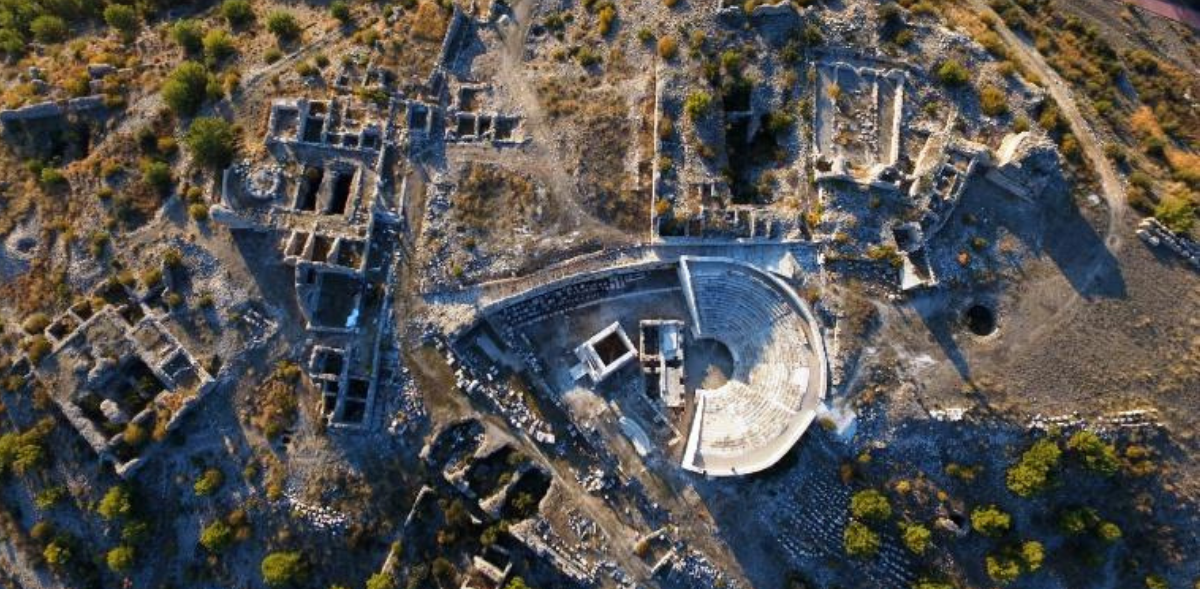
A Lycian city founded by the Rhodians: Rhodiapolis Ancient City
Rhodiapolis, which is accepted as a city founded by the Rhodians because of its name, is located on a hill near Sarıcasu Village in Kumluca District of Antalya Province.
According to Theopompos, the ancient city of Rhodiapolis was named after Rhodos, the daughter of Mopsos.
The settlement, whose existence we learn from Hekataios, is one of the few Rhodian colonies in the region such as Gagai, Phaselis, Korydalla and Olympos. Like all city kingdoms in the region, it is a member of the Lycian Union. The coins of Rhodiapolis and Gagai state that they are “Lycians”.
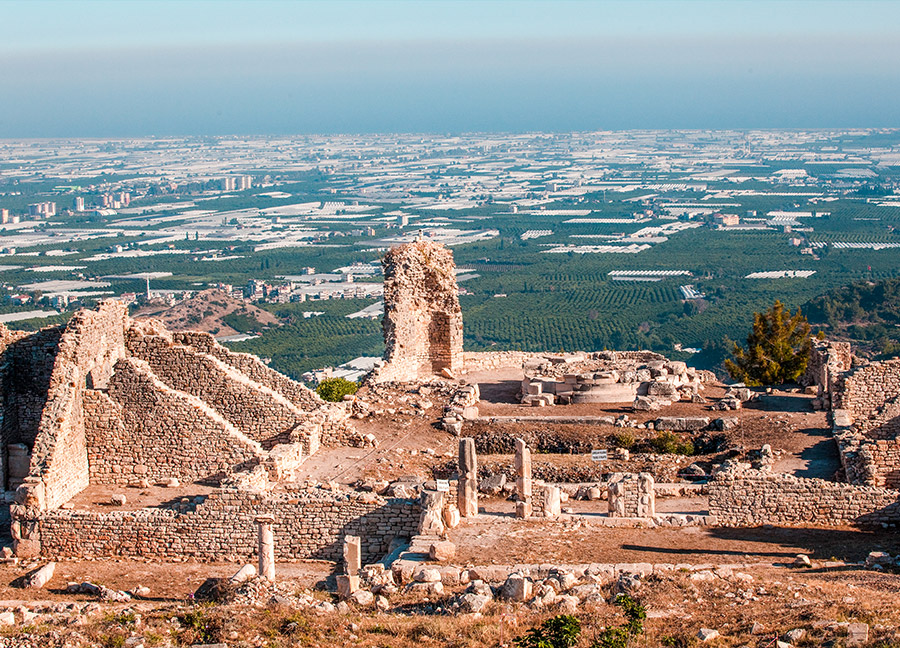
The Rhodians developed the city and ensured that its inhabitants enjoyed a prosperous period.
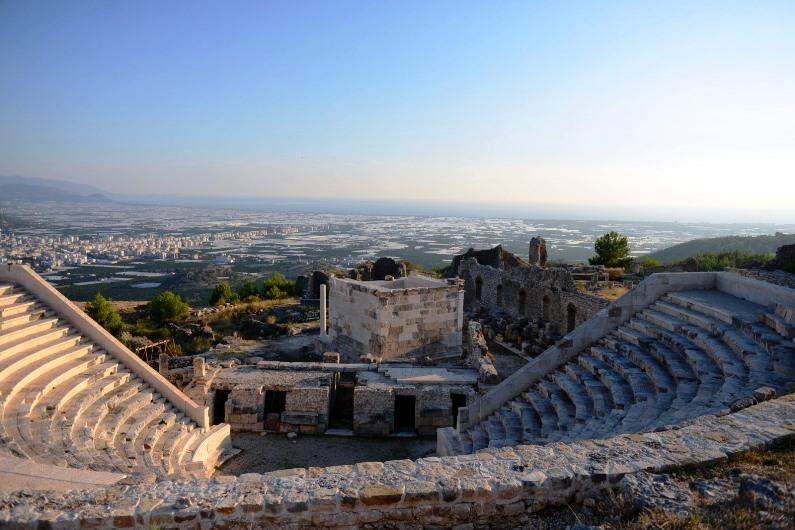
In the source titled “Rhodiapolis”, Yesterday to Today Antalya, it is stated that the most famous figure of the city was Opramoas. This person, who lived during the reign of Antonius Pius (138-161 A.D.), was the richest man and the most famous philanthropist (Euergetes) of Lycia. Opramoas was the son of Apollonios II. His mother Aglais, also known as Aristokila, was from Korydala. He had two brothers named Hermaios and Apollonios III. Opramoas’ first position in the Lycian League was archhiphylakia. He was honored four times after his early service. In the honors between 114 and 131 A.D., Opramoas received a bronze statue, a gold-plated icon and a gold wreath. In 131-132, Opramoas proved his generosity and the Lycian League decided to honor him with annual honors. There is almost no city in all Lycia that Opramoas did not help. Another characteristic of Opramoas is hidden in Hadrian’s memoirs.
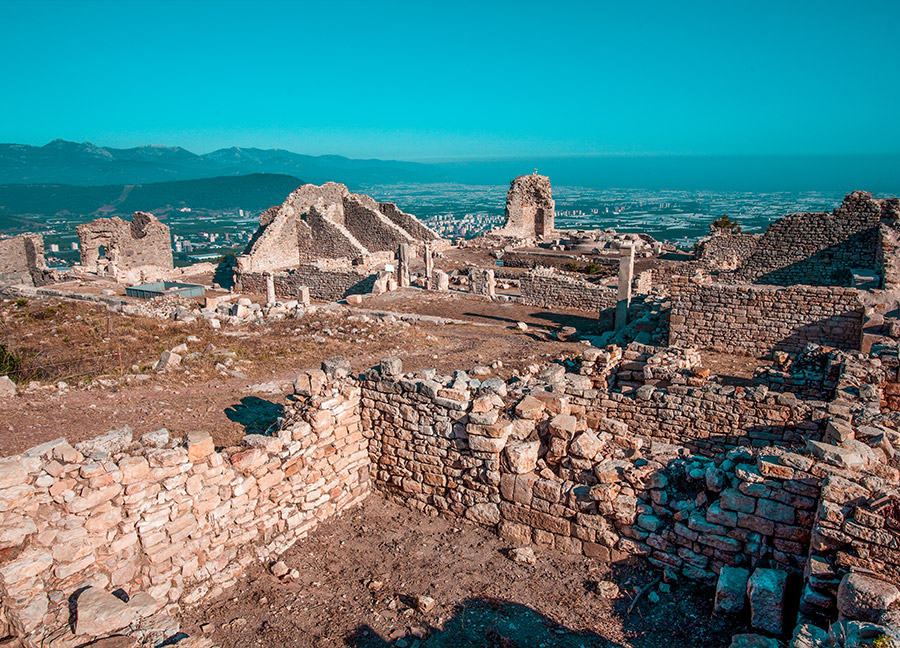
Hadrian recounts that “the secret reports of the Lycian merchant Opramoas, who had detailed knowledge of Asian affairs, were ridiculed by Palma”.
Rhodiapolis does not have remains that reflect the 7th century BC except for the rock tomb with a Lycian inscription.
The earliest known remains in the city are Classical Age rock tombs. Apart from the rock tomb with an inscription in Lycian and the Hellenistic tower to the north of the theater, it gives the impression of a Roman city that adheres to its traditions. However, the majority of the ruins are Byzantine Age structures, most of which have been destroyed.
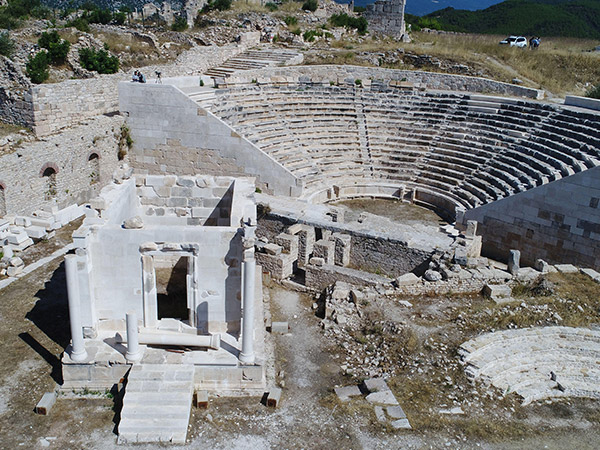
Archaeological excavations in Rhodiapolis started in 2006.
The most remarkable feature of the city, which includes a theater, baths, agora/stoa, sebasteion, temples, churches, cisterns, kenotaph, necropolises and residences, is that there are still many standing structures built of small stones with or without mortar. There is a small Greek theater in the city center.
The monument-tomb, whose walls are completely covered with inscriptions and consists of 64 documents listing all the official relations of Opramoas, is located behind the stage building in the southwest of the theater.
The necropolis is scattered in the east, southeast and north of the city.The most interesting remains of the necropolis areas where sarcophagi from the Roman Age are found is the rock tomb with an inscription in Lycian language.
Cover photo: Antalya Provincial Directorate of Culture and Tourism
You may also like
- A 1700-year-old statue of Pan unearthed during the excavations at Polyeuktos in İstanbul
- The granary was found in the ancient city of Sebaste, founded by the first Roman emperor Augustus
- Donalar Kale Kapı Rock Tomb or Donalar Rock Tomb
- Theater emerges as works continue in ancient city of Perinthos
- Urartian King Argishti’s bronze shield revealed the name of an unknown country
- The religious center of Lycia, the ancient city of Letoon
- Who were the Luwians?
- A new study brings a fresh perspective on the Anatolian origin of the Indo-European languages
- Perhaps the oldest thermal treatment center in the world, which has been in continuous use for 2000 years -Basilica Therma Roman Bath or King’s Daughter-
- The largest synagogue of the ancient world, located in the ancient city of Sardis, is being restored











Leave a Reply